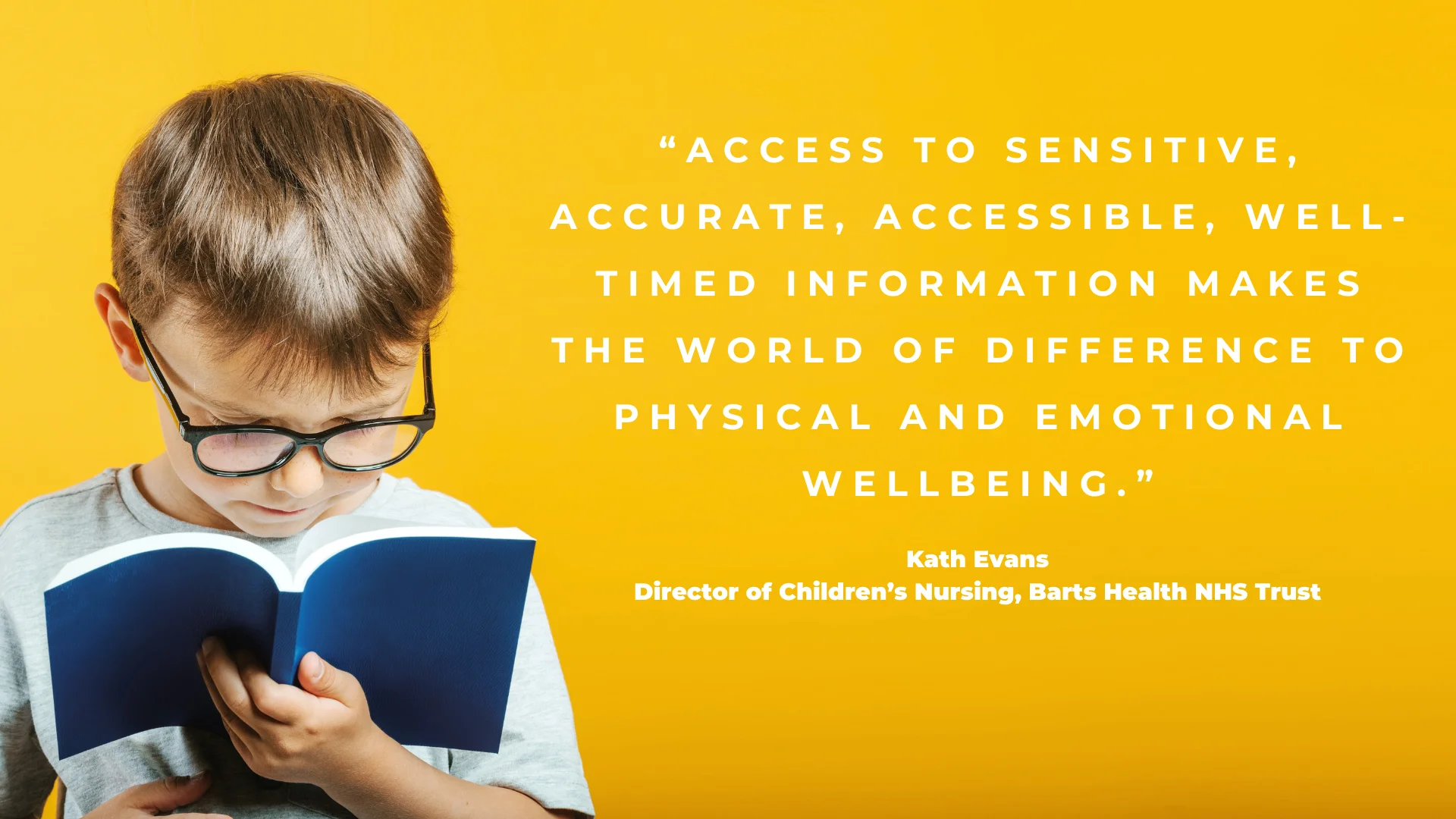
A Guide to Producing Health Information for Children and Young People
If you’re reading this then you’re likely to be part of an organisation or brand focussed on treating or supporting those with acute or chronic health issues. Perhaps it’s a charitable support service or maybe an OTC product.
Whatever the solution or service, giving people access to healthcare information as part of your marketing approach is an important step towards positively impacting the quality of health outcomes and patient compliance.
The need for health information for children and young people
Kath Evans, Director of Children’s Nursing, Barts Health NHS Trust recently said “…access to sensitive, accurate, accessible, well-timed information makes the world of difference to physical and emotional wellbeing. It helps put people in control, resulting in better outcomes.”
It’s also been suggested that by 2030, one-third of premature mortality due to non-communicable diseases (e.g., heart disease, stroke, diabetes) could be reduced with appropriate early intervention (UN, 2021) and promoting the development of health literacy would help to support this.
The success of such an approach is founded on the ability of patients to understand the information and insight they are being served – which might not seem too much of a challenge for any savvy marketers out there.
But it is….
- 7.1 million adults currently read and write at or below the level of a nine-year-old resulting in over 4 in 10 adults not understanding health care information currently in circulation (Adult Literacy Trust)
- Patients are alienated by the very thing that’s designed to speak to and engage them due to an underrepresentation of cultural, gender, and ethnic diversity (BMC, 2019)
- There is an incorrect assumption that people, particularly the younger generation, prefer information in digital form, but not everyone has access to the internet nor has this preference as a given (University of Oxford).
- Despite the increasing recognition that services should be child-centred rather than family-centred, much health literature ignores the patient in question.
More on this, as we feel it’s an important point.
We often see children and young people as passive recipients of healthcare (NICE, 2021). Not only does this mean that they are not listened to, but by not proactively ensuring children and young people understand their own condition, we can inadvertently cause problems that affect future care such as anxiety and distress before routine immunisations or a general fear of healthcare appointments.
Children and young people have the right to be provided with information so they too can take part in decisions about their treatment and care. Not making health information more accessible to children and young people fails them on a grand scale.
Our friends at The Patient Information Forum (a UK membership organisation and network for people working in health information and support) recently released a fantastic guide on producing high-quality health information for children and young people.

Golden rules when writing for children and young people
- Keep sentences short and in logical order. “You will fall asleep after the injection” could read, “You will have an injection, then fall asleep.”
- Keep the vocabulary simple and explain new words. Words can also be written phonetically. For instance, “It is called epilepsy (say: epi-lep-see).”
- Numbers and statistics such as “60%” may not mean much to many children. Consider saying “6 out of 10” or showing data as graphics.
- Call attention to facts. Statements like ‘It’s Amazing!’, ‘Did you Know?’ or ‘Top Five Facts’ can highlight short, succinct and important details
- Big chunks of text are off-putting. Break up the text by using bullet points, different fonts, colours and pictures that add meaning.
- Place important text into boxes or use a bigger or bold font
- Think about the size of the text and the fonts you are using. Jazzy fonts or block capitals may appeal to children but can be hard to read.
- Create opportunities to recap information and reinforce learning such as quizzes, multiple-choice questions and bullet points.*
*This gives adults the chance to check whether the child or young person has understood the information.

Are there any additional nuances depending on the age of the child?
Children under 5
Children under five learn and understand through play so you may want to consider including drawing activities or a simple quiz.
For very young children, health information should be provided in a format they can share with a trusted adult, such as a parent or teacher. This allows the child to ask questions and express their feelings. It gives the adult an opportunity to explain and reassure.
Children between 5 and 7 years
At this point, children are developing memory and questioning skills. Some can read independently and may be starting to use books and digital formats to find information.
Consider short bursts of information and a storytelling approach. Look at popular books, websites and games for this age group to get ideas about language, layout and illustration.
Children aged between 8 and 11
Most children aged between 8 and 11 can understand more detailed information. They can:
- Identify the main points of what they have read or heard
- Ask questions to clarify meaning
- Explain their ideas and opinions
- Modify their opinions in light of new information
- Start making judgements and decisions.
This age group likes the question-and-answer format. They also enjoy ‘amazing facts’ or ‘did you know?’ features.
Other general accessibility tips for patient information
Other helpful tips for general accessibility include:
- Use personal pronouns such as ‘we’ and ‘you’ to build trust
- Capital letters are harder to read but words written in lowercase have shape. This helps recognition.
- Italics can be harder to read for people with visual challenges
- Use present and active tenses. It is easier to understand ‘your appointment is on…’ than ‘your appointment has been made for…’
- Use everyday words where possible. ‘Before’ not ‘prior to’, ‘need’ not ‘require’.
- Avoid the use of metaphors

If you’d like to read more about creating good health information, including involving children, choosing the right format, writing for children, and tackling sensitive issues then we’d highly recommend visiting the Patient Information Forum website. Here you’ll find the guide in its entirety as well as case studies providing both practical tips and inspiration.
Of course, you’re also welcome to contact our team too. We have over 30 years of experience in healthcare and patient information so would be delighted to chat to you about any of your upcoming campaigns or even brainstorm a few ideas with you.